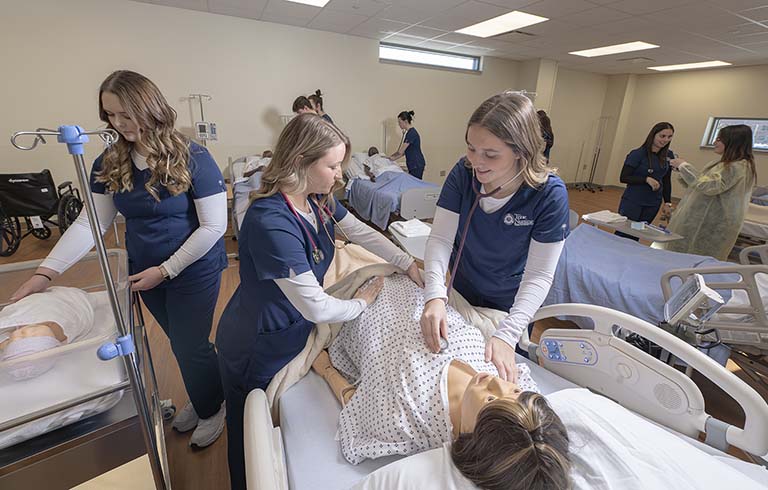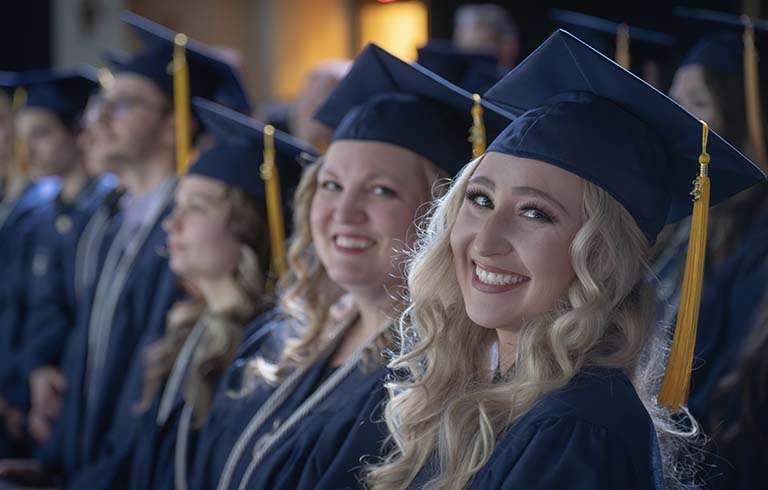A team of Trine University biomedical engineering faculty and students has received
a grant for $15,000 from the Indiana Space Grant Consortium (INSGC) for a research
project involving a potential treatment for blood clotting disorders.
The group has engineered nanoparticles to carry thrombin, an enzyme that assists in
blood clotting, in the hope that these particles can be a viable treatment for those
who suffer from disorders where blood does not clot properly.
“There is a charge on the nanoparticle shell that is attractive for proteins to adsorb
into the surface of,” said Trine senior Alexander Pessell from Arcadia, Ohio. “We
take advantage of that by adding the enzyme and allowing it to adsorb onto the outermost
surface, exposing the enzyme to interact with platelets in the blood and fibrinogen
(a clotting factor) in the blood vessels.”
In addition to Pessell, the team includes seniors Kayle Riley, from Coldwater, Michigan;
Anthony Geraci, from Cincinnati, Ohio; and Kennedy Baugh, from Walton, Kentucky; and
faculty Melanie G. Watson, Ph.D., associate professor of biomedical engineering, and
Max Gong, Ph.D., assistant professor of biomedical engineering.
The team is working to design a device that will mimic the structure and function
of human blood vessels to test the nanoparticles. The team also hopes to develop a
similar device that will mimic the structure and function of human kidneys.
“The ultimate goal is to research a technique that could eventually be translated
by other researchers in the field to help people who suffer from hemophilia or other
blood clotting disorders, or for those who need to clot their blood fast,” Pessell
said.
The grant will be used to purchase supplies, reagents and lab equipment, and provide
registration to biomedical engineering-related conferences.
For a related senior design project, the students, with Watson serving as advisor,
will use a 3D bioprinter in Trine’s Jim and Joan Bock Department of Biomedical Engineering
to create structures that simulate human tissues with capillaries, in order to test
the nanoparticles.
The students have been selected to present a poster on their research during the virtual
annual meeting of the Biomedical Engineering Society (BMES), Oct. 14-17.
The poster, titled “Platelet Aggregation Techniques Utilizing Biotinylated Thrombin
via Iron Oxide Nanoparticle Carriers,” will be available to view by attendees during
and after the meeting, with multiple opportunities to answer questions and connect
with attendees about the research.
The students also will present their work virtually at the International MicroTAS
conference. Held Oct. 4-9, the conference focuses on miniaturized systems for chemistry
and life sciences.
The Indiana Space Grant Consortium was created in 1991 under NASA’s National Space
Grant College and Fellowship Program. The Space Grant national network includes organizations
working to expand opportunities for Americans to learn about and participate in NASA’s
aeronautics and space projects by supporting and enhancing science and engineering
education, research and public outreach efforts.
Photo: A Trine University team is researching a potential treatment for blood clotting disorders. Front, from left,
Melanie G. Watson, Ph.D., associate professor of biomedical engineering, serves as
advisor for the senior design team of biomedical engineering majors Kayle Riley, Kennedy
Baugh; back, Anthony Geraci and Alexander Pessell. The group is also working with
Max Gong, Ph.D., assistant professor of biomedical engineering.
Last Updated: 04/08/2021



